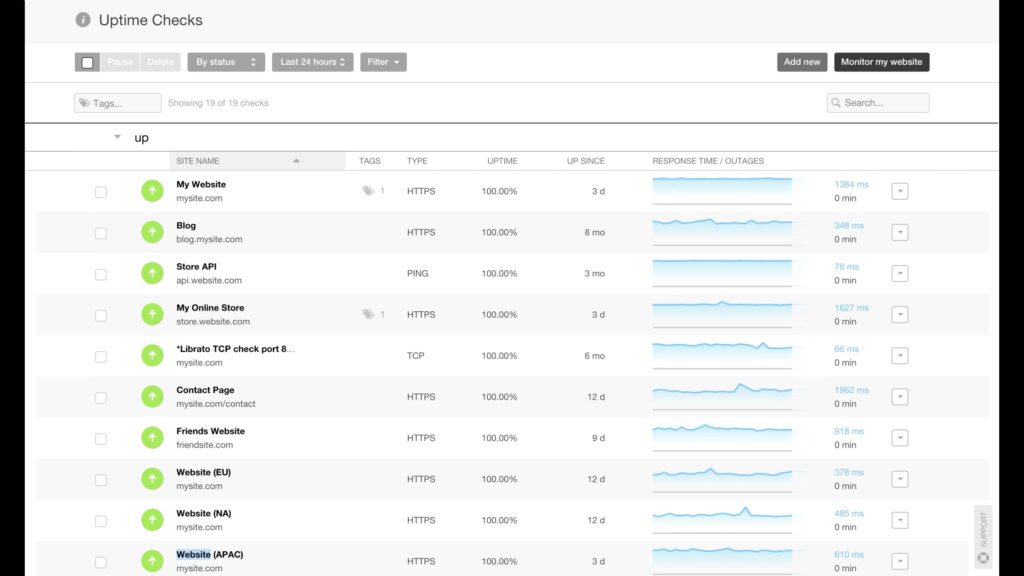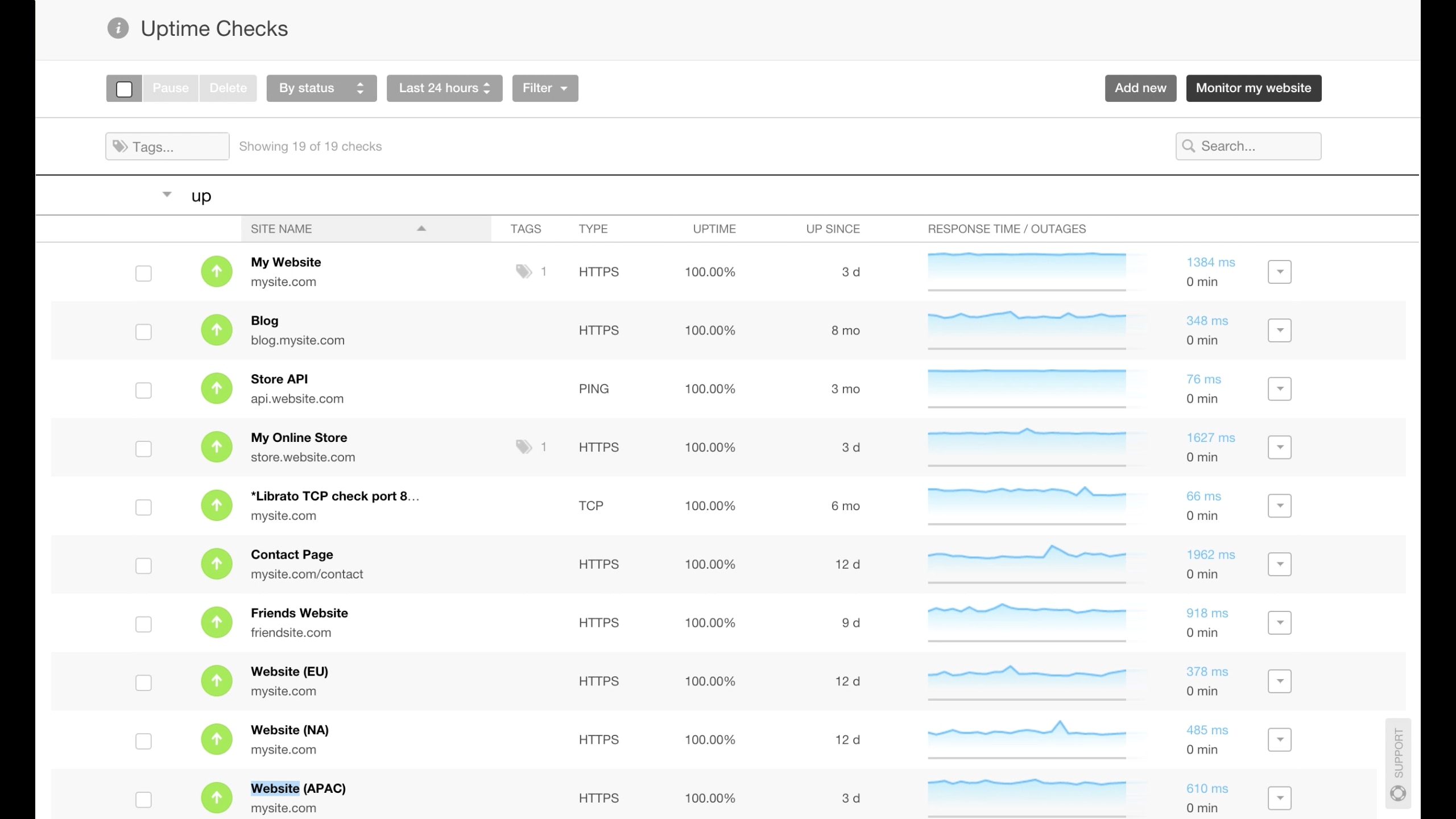
Maximize Reliability: The Ultimate Guide to Internet Uptime Monitoring
In today’s interconnected world, a stable and reliable internet connection is paramount. From businesses conducting critical operations to individuals relying on online services, internet downtime can lead to significant disruptions, financial losses, and reputational damage. This is where internet uptime monitoring comes into play. This comprehensive guide explores the critical role of internet uptime monitoring, its benefits, implementation strategies, and best practices.
Understanding Internet Uptime and Downtime
Internet uptime refers to the period during which an internet connection is available and functioning correctly. Conversely, internet downtime represents the duration when the connection is unavailable or experiencing issues. Uptime is typically expressed as a percentage, reflecting the proportion of time the connection is operational over a specific period. For example, 99.9% uptime means the connection is available for 99.9% of the time, with minimal downtime.
Why is Uptime Important?
High internet uptime is crucial for several reasons:
- Business Continuity: Many businesses rely on the internet for essential functions, such as online sales, cloud-based applications, and communication. Downtime can halt these operations, leading to lost revenue and productivity.
- Customer Satisfaction: Customers expect seamless online experiences. Frequent downtime can frustrate customers, damage brand reputation, and lead to customer churn.
- Operational Efficiency: Reliable internet uptime ensures that employees can access the resources they need to perform their jobs efficiently, such as email, file sharing, and online collaboration tools.
- Financial Stability: Downtime can result in direct financial losses, including lost sales, service level agreement (SLA) penalties, and recovery costs.
The Role of Internet Uptime Monitoring
Internet uptime monitoring is the process of continuously tracking the availability and performance of an internet connection. It involves using specialized tools and techniques to detect and alert users to any downtime or performance degradation. By proactively monitoring internet uptime, organizations can identify and address issues before they significantly impact operations.
How Internet Uptime Monitoring Works
Internet uptime monitoring typically involves the following steps:
- Selecting Monitoring Tools: Choose a reliable internet uptime monitoring tool that meets your specific needs and requirements. Many options are available, ranging from basic ping monitoring to advanced performance analysis.
- Configuring Monitoring Parameters: Define the parameters to be monitored, such as response time, packet loss, and DNS resolution. Configure the monitoring tool to send alerts when these parameters exceed predefined thresholds.
- Setting Up Alerting Mechanisms: Establish alerting mechanisms to notify relevant personnel when downtime or performance issues are detected. This can include email notifications, SMS messages, or integrations with incident management systems.
- Analyzing Monitoring Data: Regularly review the monitoring data to identify trends, patterns, and potential problem areas. This information can be used to optimize network configurations and prevent future downtime.
- Taking Remedial Actions: When downtime or performance issues occur, take immediate remedial actions to restore connectivity and resolve the underlying problem. This may involve contacting your internet service provider (ISP), troubleshooting network devices, or implementing failover solutions.
Benefits of Internet Uptime Monitoring
Implementing internet uptime monitoring offers numerous benefits:
- Proactive Downtime Detection: Internet uptime monitoring enables you to detect downtime before it impacts your business or customers.
- Faster Issue Resolution: By providing real-time alerts and detailed performance data, internet uptime monitoring helps you quickly identify and resolve the root cause of downtime.
- Improved Network Performance: Monitoring tools can identify performance bottlenecks and areas for optimization, leading to improved network performance and reliability.
- Reduced Downtime Costs: By minimizing downtime, internet uptime monitoring can significantly reduce financial losses and operational disruptions.
- Enhanced Customer Satisfaction: Reliable internet uptime ensures a seamless online experience for your customers, leading to increased satisfaction and loyalty.
- Better SLA Management: Internet uptime monitoring helps you track and verify your ISP’s compliance with service level agreements (SLAs).
Choosing the Right Internet Uptime Monitoring Tool
Selecting the appropriate internet uptime monitoring tool is crucial for effective monitoring. Consider the following factors when making your decision:
- Monitoring Capabilities: Ensure the tool offers the monitoring capabilities you need, such as ping monitoring, HTTP monitoring, DNS monitoring, and traceroute analysis.
- Alerting Options: Choose a tool that provides flexible alerting options, including email, SMS, and integrations with popular incident management systems.
- Reporting and Analytics: Look for a tool that offers comprehensive reporting and analytics features to help you identify trends and patterns in your network performance.
- Scalability: Select a tool that can scale to meet your growing monitoring needs.
- Ease of Use: Choose a tool that is easy to use and configure, even for non-technical users.
- Cost: Consider the cost of the tool, including subscription fees, hardware requirements, and maintenance costs.
Popular internet uptime monitoring tools include:
- UptimeRobot: A popular and affordable option for basic internet uptime monitoring.
- Pingdom: A comprehensive monitoring solution that offers a wide range of features, including website monitoring, server monitoring, and network monitoring.
- Datadog: A powerful monitoring and analytics platform that provides real-time insights into your infrastructure and applications.
- Site24x7: A cloud-based monitoring solution that offers a wide range of features, including website monitoring, server monitoring, and application monitoring.
- Statuscake: Offers website monitoring, domain monitoring, and server monitoring.
Implementing Internet Uptime Monitoring: Best Practices
To maximize the effectiveness of internet uptime monitoring, follow these best practices:
- Define Clear Monitoring Objectives: Clearly define your monitoring objectives and the metrics you want to track.
- Establish Alerting Thresholds: Set appropriate alerting thresholds to avoid alert fatigue.
- Regularly Review Monitoring Data: Regularly review the monitoring data to identify trends and potential problem areas.
- Document Procedures: Document procedures for responding to downtime incidents.
- Test Failover Solutions: Regularly test your failover solutions to ensure they are working correctly.
- Stay Informed: Stay informed about the latest internet uptime monitoring technologies and best practices.
Advanced Internet Uptime Monitoring Techniques
Beyond basic ping monitoring, several advanced techniques can provide deeper insights into your internet uptime and performance:
- Traceroute Monitoring: Traceroute monitoring helps identify network bottlenecks and latency issues by tracing the path of data packets between your network and the destination server.
- DNS Monitoring: DNS monitoring ensures that your domain name system (DNS) servers are functioning correctly and resolving domain names accurately.
- HTTP Monitoring: HTTP monitoring verifies the availability and performance of your web servers and applications.
- SSL Certificate Monitoring: SSL certificate monitoring ensures that your SSL certificates are valid and have not expired.
- Real User Monitoring (RUM): RUM captures data about the actual user experience on your website or application, providing insights into performance issues that may not be detected by synthetic monitoring.
The Future of Internet Uptime Monitoring
As the internet continues to evolve, internet uptime monitoring will become even more critical. Emerging technologies such as 5G, the Internet of Things (IoT), and edge computing are increasing the complexity of networks and the demand for reliable connectivity. Future trends in internet uptime monitoring include:
- AI-Powered Monitoring: Artificial intelligence (AI) and machine learning (ML) are being used to automate monitoring tasks, predict downtime, and optimize network performance.
- Cloud-Based Monitoring: Cloud-based monitoring solutions offer scalability, flexibility, and cost-effectiveness.
- Proactive Threat Detection: Internet uptime monitoring tools are being integrated with security solutions to detect and prevent cyberattacks that can disrupt connectivity.
- Improved Visualization: Advanced visualization tools are making it easier to understand complex monitoring data and identify potential problems.
Conclusion
Internet uptime monitoring is an essential practice for businesses and individuals who rely on a stable and reliable internet connection. By proactively monitoring internet uptime, organizations can detect and address issues before they significantly impact operations, reduce downtime costs, and enhance customer satisfaction. Choosing the right internet uptime monitoring tool and implementing best practices are crucial for maximizing the effectiveness of your monitoring efforts. As the internet continues to evolve, internet uptime monitoring will become even more critical for ensuring business continuity and delivering seamless online experiences. [See also: Network Monitoring Best Practices], [See also: Website Downtime Prevention]

